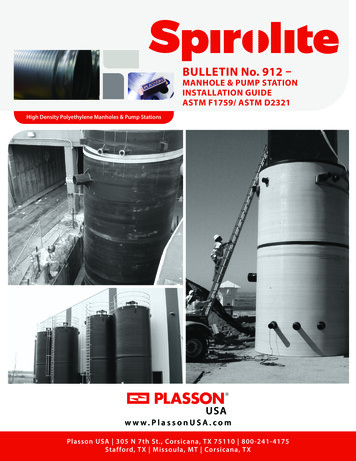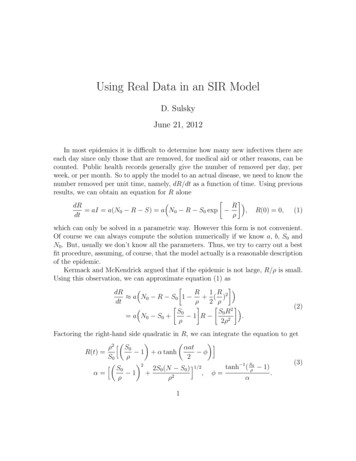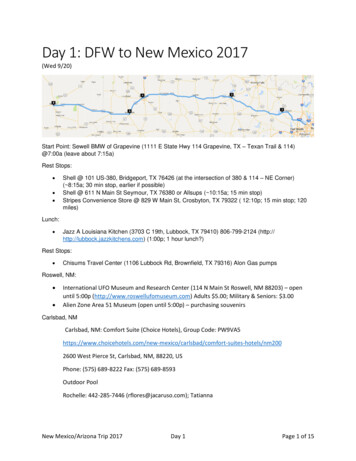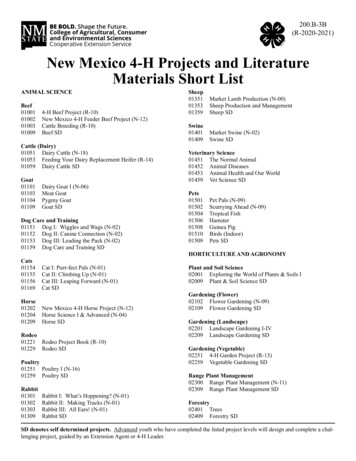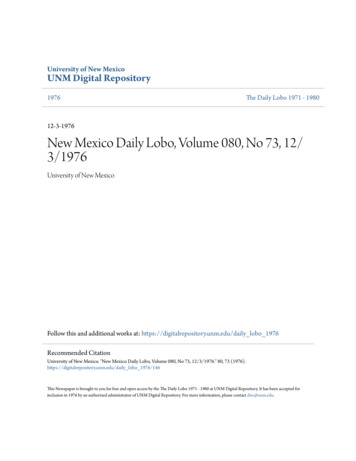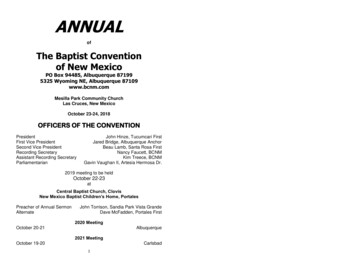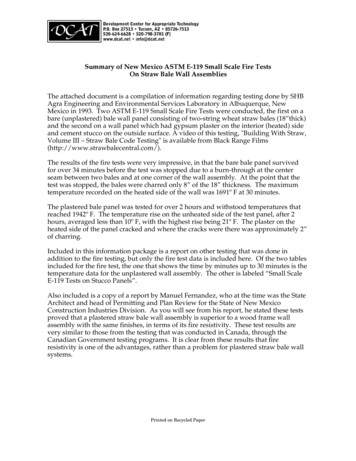
Transcription
Summary of New Mexico ASTM E-119 Small Scale Fire TestsOn Straw Bale Wall AssembliesThe attached document is a compilation of information regarding testing done by SHBAgra Engineering and Environmental Services Laboratory in Albuquerque, NewMexico in 1993. Two ASTM E-119 Small Scale Fire Tests were conducted, the first on abare (unplastered) bale wall panel consisting of two-string wheat straw bales (18”thick)and the second on a wall panel which had gypsum plaster on the interior (heated) sideand cement stucco on the outside surface. A video of this testing, "Building With Straw,Volume III – Straw Bale Code Testing" is available from Black Range Films(http://www.strawbalecentral.com/).The results of the fire tests were very impressive, in that the bare bale panel survivedfor over 34 minutes before the test was stopped due to a burn-through at the centerseam between two bales and at one corner of the wall assembly. At the point that thetest was stopped, the bales were charred only 8” of the 18” thickness. The maximumtemperature recorded on the heated side of the wall was 1691º F at 30 minutes.The plastered bale panel was tested for over 2 hours and withstood temperatures thatreached 1942º F. The temperature rise on the unheated side of the test panel, after 2hours, averaged less than 10º F, with the highest rise being 21º F. The plaster on theheated side of the panel cracked and where the cracks were there was approximately 2”of charring.Included in this information package is a report on other testing that was done inaddition to the fire testing, but only the fire test data is included here. Of the two tablesincluded for the fire test, the one that shows the time by minutes up to 30 minutes is thetemperature data for the unplastered wall assembly. The other is labeled “Small ScaleE-119 Tests on Stucco Panels”.Also included is a copy of a report by Manuel Fernandez, who at the time was the StateArchitect and head of Permitting and Plan Review for the State of New MexicoConstruction Industries Division. As you will see from his report, he stated these testsproved that a plastered straw bale wall assembly is superior to a wood frame wallassembly with the same finishes, in terms of its fire resistivity. These test results arevery similar to those from the testing that was conducted in Canada, through theCanadian Government testing programs. It is clear from these results that fireresistivity is one of the advantages, rather than a problem for plastered straw bale wallsystems.Printed on Recycled Paper
Two ASTM E-119 Small Scale Fire Tests were conducted, the first on a bare (unplastered) bale wall panel consisting of two-string wheat straw bales (18”thick) and the second on a wall panel which had gypsum plaster on the interior (heated) side and cement stucco on the outside surface. A video of this testing, "Building With Straw, Volume III – Straw Bale Code Testing" is available from .



